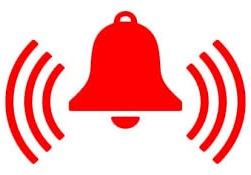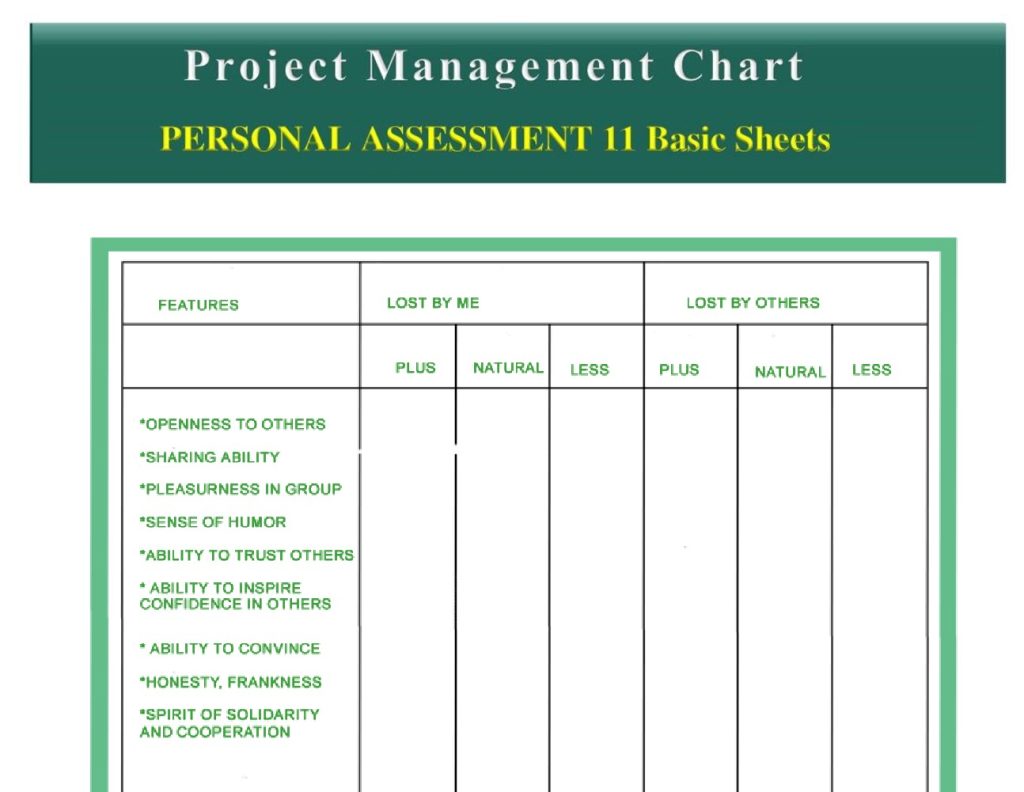Stress Management is The Key to Personal And Professional Fulfillment
Stress management is the key to personal and professional fulfillment.
In the workplace, stress can quickly become contagious and consequently affect team productivity.
This article will help you understand the process and impact of stress at work and in your daily life to manage it better.
I will then give you some techniques to manage it effectively.
Summary
What is stress management?
What are the types of stress?
Understand your stress and manage it.
How to manage stress at work?
What are the causes of stress at work?
Conclusion
What is Stress Management?
Stress evokes, in reality, a set of alert reactions in our organism which arise in certain foreseen contexts, with or without right, as worrying for our basic balance.
There follows a flow of physiological transformations that prepare the individual to face this situation, either by fight or by flight.
Stress management corresponds to a lifestyle, a routine to install in one’s daily life in order to improve one’s reaction in the presence of stress while maintaining control in any possible situation.
What Are The Types Of Stress?
There are 2 types of stress:
Positive stress: Stress triggered and maintained at an optimal level; it’s good stress, and there’s productivity
Negative stress: Once this optimal level has been exceeded, it is negative stress, less or no productivity. Once the extreme point is reached, it’s sick; it’s burnout
Let’s take a closer look at how these two typologies work:
stress curve
1- Positive Stress
Often forgotten, it is a type of stress that should normally be often solicited because it stimulates the person to accomplish their projects and missions.
The individual thinks and works with joy.
He feels stimulation and motivation. Thus, he overflows with energy and enthusiasm.
And when only a small success is achieved, or just a milestone is reached, the person feels satisfaction and happiness.
Example:
Olivia, the manager of a new project, brings together her team members at the start of each week, making sure to welcome each of them warmly.
She maintains her smile throughout the meeting.
Her walk, her posture, and her gestures are full of energy.
Her voice is as sweet as it is pleasant. She takes care to listen to them.
It encourages them to find solutions themselves to the constraints encountered.
In addition, she recognizes any effort made and congratulates her team members for each success recorded, however small.
All his team members are happy and strongly involved in the project
They look forward to the Monday meetings to present their feedback and the progress of the project.
Find out here how to develop team effectiveness with the Herrmann model
2- Negative Stress
Often misunderstood, it usually passes unconsciously.
It is established in the intensity and durability of the person’s reactions to an environment perceived rightly or wrongly as appalling and/or impassable.
Far from cultivating positive energy and motivation, negative stress annihilates the person, stuns him, paralyzes him…
Therefore, to curb or even complete this negative, very harmful and destructive stress, good stress management is urgently needed.
Understand Your Stress in 3 Points
Several transformations occur when the individual is stressed.
Concretely, stress management encompasses a set of events: physiological, clinical, emotional, mental and behavioral.
Understanding your stress level and its manifestations and impact on your organism and emotions is necessary.
1- How Does It Visible?
Once confronted with stress, our body undergoes transformations (secretion of adrenaline, increased heart rate, etc.) with the aim of delivering more oxygen to our brain, heart, and muscles.
Then, cortisol comes into play to increase the proportion of glucose in the blood in order to benefit the brain, heart and muscles.
Our body finds itself, therefore, in a state of alert in the face of any energy demand required by its reaction to the stressful context.
When stress is prolonged or intensifies, a number of clinical expressions will be noticeable:
The person may have headaches, migraines, or even dizziness. He may have trouble sleeping
For example, When the individual presents a project to the general public or his managers, he may show memory lapses and lose his train of thought…
He is looking for his words; he sweats, turns red…
His hands and lips may tremble… He may feel tired, exhausted…
2- What Is Happening Emotionally And Mentally?
In a situation of prolonged or excessive stress, the emotional system is largely mobilized.
As a result, stress management cannot be detached from the management of one’s emotions.
The individual may become irritable or feel frustrated, which can degenerate, over time, into anxiety or even depression.
Mentally, the person has difficulty concentrating. She becomes very hesitant when initiative is required. The person even becomes indecisive.
On the other hand, low self-esteem begins to set in gradually.
3- What Are The Alarming Behaviors?
In the absence of stress management, a certain number of attitudes and behaviors will emerge, little by little, in the person suffering from prolonged or intense stress.
The person could abuse tobacco, alcohol, stimulants…
She could be absent, without reason or excessively, from her work.
His gestures become clumsy. We see her, more and more, isolating herself socially…
She dodges pressing situations, and her perceptions of certain common situations, at work or in the family, become negative and oversized.
4- General Adaptation Syndrome
4.1- Selye model
Hans Selye, a Quebec doctor of Austrian origin, considered a pioneer in research on stress and, also, on stress management, defines the latter as being:
“The set of physiological and psychological resources used by an individual to adapt to a given event.”
He makes it clear that “the sudden change manifesting itself in the habits of a person, hitherto well balanced, is liable to cause a whole upheaval in his psychic and even somatic structure.”
In this context, he developed his famous theory entitled “General Adaptation Syndrome” or “Selye Model.”
Selye has well described the two types of stress mentioned above, namely: positive stress and negative stress.
He states that negative stress does not enable the body to regain its balance because it maintains the distress situation in which it finds itself.
Nevertheless, you can convert negative stress into positive stress if you have the basics of stress management.
4.2- Phases of Stress
Hans Selye describes three stages as the body’s responses to stressful stimuli:
General Adaptation Syndrome 3 Stages
1ST STEP
Alarm Step
Organization Alert

2ND STEP
Stage of Resistance
Fight and Resistance

3RD STEP
Exhaustion Stage
Difficulty in Recovering

Alert step or alarm
The person copes with stressors. His body mobilizes the energy resources necessary for adaptation to stress.
How to Manage Stress at Work?
Stress management requires the application of a healthy lifestyle both at work and at a personal level.
Let’s see the routines to create for each of these aspects: professional and personal:
1- Establish Work-Life Rules
Here are some tips for establishing rules of life at work and improving its efficiency:
1. The work environment must be clearly communicated to the employee, understood and accepted by him
2. The responsibilities of the employee and the expectations of the organization must be clearly explained
3. Management must communicate well on the prospects for the development and professional evolution of employees
4. Autonomy and creativity should be encouraged in the professional environment, which does not exclude the control of activities. The delegation of tasks, if deserving, stimulates productivity and cultivates the pleasure of working
5. The spirit of collaboration must be stimulated within the organization as long as it boosts the good relationship between colleagues, and suddenly, the performance
6. Working conditions and safety standards should be continuously optimized
7. Distribution of roles, projects, their number, and deadline between various employees should gain rationality and realism.
8. The support and motivation associated with balanced workloads are measures to be deployed in the workplace.
9. Become aware of your state of stress and seek to identify the stressor
10. Challenge false beliefs: many of our beliefs are false and subjective. Learn, therefore, to rationally evaluate our beliefs
11. Learn to set SMART goals: the golden rule is to ensure that our goals must be ambitious enough to gain motivation and, at the same time, realistic enough to avoid disappointment
12. Develop good plans: the fundamental recommendation for accomplishing them is to take into account both your abilities and your limits
13. Learn to prioritize tasks: The Eisenhower matrix can help us, invaluable, in prioritizing our tasks. Thus, our decisions will be healthy, and we will gain in terms of stress and time management.
14. Take breaks: When we feel pressure, the best way to reduce it is to take a break. Take tea, coffee, swallow a glass of water, get into a social conversation with a colleague or friend for a quarter of an hour, pace… All this will allow us to hunt the “beast” and recharge our batteries with positive energy.
15. Avoid distractions: the noise, the phone that keeps ringing, the cold, the heat, the notifications from your computer, people entering the office without an appointment… All these things take us away from our objectives and priorities
16. We often have to say no: it means ceasing to accept everything to the detriment of our priorities and objectives. It’s about saying it nicely: “I would have liked to do you a favor and it happens that I have to finalize this project before the weekend. I am really sorry.”
17. Learn to delegate using the Eisenhower Matrix
2- Improve Your Lifestyle
Thinking of effective stress management without installing new healthy habits is useless.
I give you 12 tips to develop a healthy mind in a healthy body:
1. Balanced diet: eat healthy: vegetables, fruits, fish, meat sometimes. Reduce consumption of stimulants (tea, coffee, etc.). Avoid tobacco…
2. Drink enough water: 1 to 1.5 liters a day; it refreshes and cleanses the body
3. Get good sleep: get enough rest and try to sleep soundly. 6 to 7 hours of sleep will revitalize us and make us bursting with energy
4. Walking or even jogging: ½ hour to 1 hour a day will keep us in shape
5. Abdominal breathing: It relaxes and improves stress management
6. Temporarily put yourself out of the zone: turn off your laptop and computer on weekends, evenings, and during the accomplishment of important projects; it disconnects, reassures, and it calms
7. Take a detour to the countryside, to the forest, to the seaside, to the mountains
8. A bit of humor: a few moments a day: it calls out the child in us. It brings joy to life
9. Meditation: yoga, prayer…
10. Live in the present moment: learn to come back from time to time to the here and now by abandoning, for a moment, the projections of our thoughts towards the future or the past
11. Self-suggestion: repeating positive phrases to yourself every day to get enthusiastic and recharge your batteries with positive energy: “I am capable,” “I can do it,” and “I have confidence in myself.”
What Are The Causes Of Stress At Work?
We dedicate, practically, 1/3 of our life to work.
Consequently, there are many sources of stress inherent in our active lives.
In principle, stress management must take into account 2 types of work-related stressors:
- Causes related to the nature of the work itself
- The causes related to the person himself
1. Causes Related To the Work Itself
These are, in fact, the different components of the content of the work itself and those of the work environment, which, if they are not taken seriously into consideration, could generate pressure and stress at work, even burnout.
This is why management must be aware of this and must therefore take drastic measures to avoid the expansion of stress in the workplace.
Below are a Number of Work-Related Factors:
1.1- Content of the Work
It is:
- Overload or, frankly, an underload of work,
- Exaggerated quantitative or qualitative expectations,
- Boring, iterative tasks…
- Insufficient time to complete activities…
1.2- Organization
It is:
Superimposed or inappropriate distribution and timing of activities,
Poorly specified missions,
Paradoxical requirements…
1.3- Interpersonal Relationships
It is:
Bad communication,
Lack of cooperation,
Lack of recognition,
Missing or absent support and accompaniment
1.4- Working Conditions
It is:
Lack of air conditioning,
Office clutter,
Transport problems,
Remuneration below standards…
Limited career prospects,
Job insecurity, sudden change…
Practical guide professional project
2- Causes Related To the Employee
It is clear that certain personal components of the individual could be at the origin of the development of a state of stress.
This can be harmful to the physical and mental health of the person, on the one hand, and negatively impact the performance of the organization, on the other hand.
Hence the importance for the employee to be aware of this and to develop beforehand, before joining the organization, a personal assessment and a professional assessment as part of his overall professional project.
Personal Report Template

Analyze your personality to detect your values and requirements in line with those of the job market.
And once hired, the employee is called upon to be vigilant towards these stressors in relation to his person to be able to manage his stress and emotions early and effectively.
Here are the different stressors inherent to the employee:
2.1- Personality
It is:
Introverted person, shy, perfectionist,
Angry, hate teamwork,
Lack of self-confidence…
2.2- Privacy
It is:
Divorce, death,
Debt,
Abuse of alcohol, narcotics…
2.3- Personal Values
It is a mismatch of personal values with those of the organization.
2.4- Knowledge, skills or soft skills and aptitudes
It is:
Inappropriate knowledge and skills,
Physical impairment, vulnerable health…
Conclusion
As already noted, stress is an obvious part of our everyday life.
Stress management, maintained at an intelligent level, presents a certain lever for our performance at work and our harmony in family and society.
Left behind, stress becomes destructive and harmful from every point of view.
So let’s learn to persuade it to make it our good ally.
In short, improve in good stress management.
Need Help or Advice in Academic Writing
See Samples
https://independent.academia.edu/shamsulIslam8
Need Help or Advice in Content Writing Management:
Would you like more advice? Do you have good practices to share? Express yourself in the comments. Also, if you want help in writing content to drive more traffic and boost conversions, please get in touch through Contact our team.
Do you want help writing quality content, driving traffic to your website, and boosting conversions? You can contact me through my Freelancer.com profile also. I always prefer to work through my Freelancer.com profile for smooth functioning. Here you pay safely and securely.
Read More:
HOW TO RECOGNIZE STRESS AND MANAGE
HOW TO REDUCE STRESS? 10 SCIENTIFICALLY PROVEN TIPS
STRESS IS A SILENT KILLER | 9 SYMPTOMS YOU SHOULDN’T IGNORE
